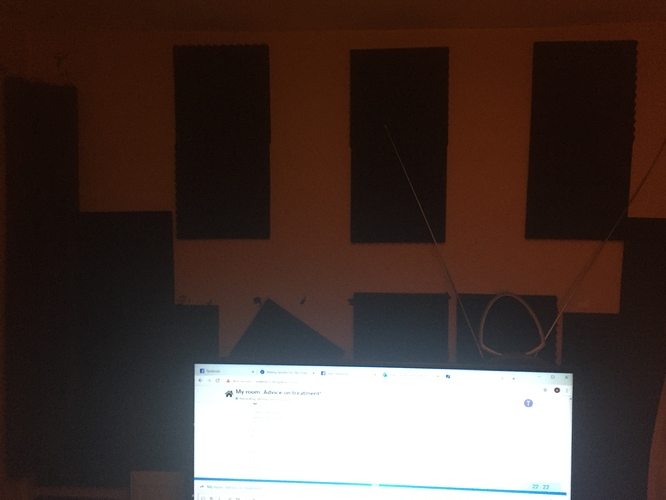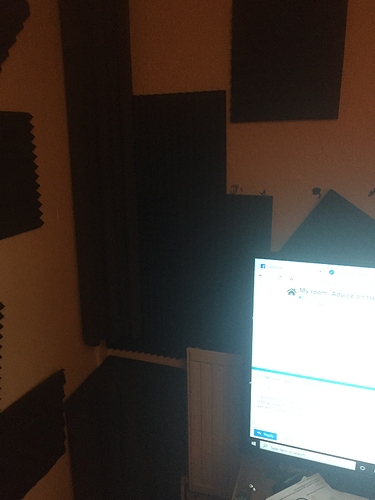I would agree with AJ, in terms of getting a great set of headphones and getting really dialed in as to how they represent what you are hearing.
What you would have to spend on treatment for a room that size vs. a set of calibrated headphones would have me leaning heavily towards the cans with compensation software. The low frequencies in your room don’t have enough space to fully form, so you’re in effect trying to absorb them more than hear them. It would be easier to get your mix 90 % of the way done and then listen to it in a bigger room to get the bass and the imaging right than it would be to correct the room, and the cost of room correction would be exorbitant for the result.
Headphones get a bad rap when it comes to mixing, but in a small room with good cans you can eliminate a lot of variables and not try to defy the laws of physics. Yes, panning and bass can cause you problems, but if you get good at compensating your room is no longer an issje.
Alan, do bass traps need to go all the way floor to ceiling? I’ve seen some designs that cover, say, half of the corner, with open space for maybe 18" above and below the corner trap. Is that not good?
Also, could you explain more about what you have behind your speakers? Sounds like you have something on your desk immediately behind your speakers and also something on the wall; is that right? Could you upload a picture? I’m trying to figure out what to do with the space behind my speakers: unfortunately, I have several windows behind the speakers. Ugh. I’ll post some pics later.
When it comes to bass trapping in a normal room, you can think of it like garlic: The more the better. Always.
This is EXACTLY what GIK and Ethan told me. The science behind if this panel is 2 feet in one direction or that panel is horizontal or vertical makes absolutely no difference. You buy as many as you can possibly afford and then keep stuffing them into the room until you run out of space.
Its super super important to not overthink this. I wasted hours and hours trying to research the effects of putting stuff in different places. This is not rocket science unless you’re building an echoic chamber for scientific test acoustics testing.
Only 3 rules:
Buy bass traps, foam is worthelss
Don’t block an important door
If it was designed to be a corner trap, put it in a corner
I came across this the other day and I thought it was really interesting: In this video by Eric Valentine, he documents his struggles with room acoustics, and how he overcame them - very interesting insight into how even a top level mix engineer and producer struggles with these things at times:

